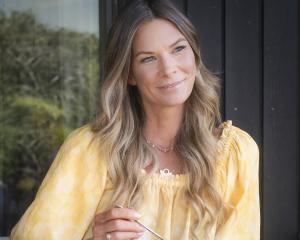That wine improves with age is a cliche but, as with most cliches, there's truth there somewhere.
But age may refer to a few extra months in the bottle, years in a cellar, vines old enough to have sent their roots deep into the subsoils to reach nutrients and minerals, or even to the maturing of winemakers as they become more familiar with how the grapes react to the soils and microclimates of their vineyards over several years, not to mention generations.
These aspects were all manifested at the eighth Central Otago Pinot Noir Celebration last weekend - the first was in 2000.
Even a few months' bottle age can make a big difference to young wines.
I tasted many of the 2009 pinots at the annual sneak preview in September last year and thought the wines fragrant and charming.
However, an extra four months in the bottle has allowed that charm to develop further, the palates to fill out and a savoury character, and sometimes a hint of mineral, to emerge.
When British wine writer Tom Cannavan (www.wine-pages.com) attended the 2006 celebration, he wondered why so many pinot noir makers were obsessed with colour, extraction and oak, and found himself preferring the regular wines over the more extracted (and expensive) reserve wines.
Pinot should celebrate finesse and softness, he said.
However, tasting at this year's event, he felt winemakers had taken that on board.
A tasting of about 80 Central pinot noirs was held at Northburn Station's cellar door, restaurant and function centre, where Jan Pinckney prepares food raised on the station and in the surrounding area.
A welcome interruption to the concentrated tasting and talking to winemakers was the buzz of Tom Pinckney's yellow Tiger Moth flying low over the vineyard, drawing tasters outside.
Some of my highlights from the many delicious 2009s included the silky, charming Chard Farm Mata-Au; the harmonious Felton Rd Block 3; the opulent Mount Edward Morrison; the intense, stylish Northburn; the fragrant, silky Rippon; the opulent Rockburn 12 Barrels; Akarua's harmonious, textural 09; the stylish, perfumed Archangel; and the charming, spicy Wooing Tree.
Some of these will not be released for a while, but others are already on the market.
Among the older pinot noirs that caught my taste buds at various tastings and meals during the three-day event were Judge Rock's charming, bees-waxy 2008 and silky, minerally 2006; Mondillo's intense, silky 2006; Prophet's Rock, seductive 2006 and rich, textural 2007; Quartz Reef's spicy, silky Bendigo 2005 and savoury, textural 2006; Rippon's deliciously long 2006; Tarras Vineyard's mellowed Canyon 2007; Three Miners' bright, elegant 2008; Two Paddocks' velvety 2006; Felton Road's spicy, mellowed 2003 Block 3 and silky but tight 2007 Block 3; Mt Difficulty's savoury, textural 2003 Target Gully; and Chard Farm's powerful Tiger 2006.
It's obviously well worth cellaring Central pinots for a couple of years.
Three of the standout older pinot noirs I tasted came from Gibbston Valley, one of the oldest producers in the region - the mature but beautifully balanced 2001 Reserve, the funky, minerally Homeblock 1998 and the charming, bright Le Maitre 2007.
These last two wines were made from some of the oldest pinot vines in the region, planted by Alan Brady in 1981.
There's something about the depth, softness and understated complexity that demonstrates the added dimension of wine made from mature vines, something many of the region's winemakers are eagerly awaiting.
Something different
One of the most remarkable and enjoyable wines of the three-day event was not a pinot noir, but Gibbston Valley's 2000 Pinot Gris.
It was a revelation for an 11-year-old white - fragrant, still with hints of peach and pear, honey and caramel, intense, stylish, long and utterly delicious.
Regular readers of my columns will know I'm often bored by pinot gris, but this intrigued me and I looked up my notes from when I originally tasted it in September 2000.
It was fragrant then, intense with lovely sweet fruit (pear, peach and citrus) and a dry finish.
It was obviously a serious wine, and Grant Taylor, then Gibbston Valley winemaker, said at the time it had been treated more like pinot noir in the vineyard, with low crops and careful viticulture.
He was excited about its potential and, it turns out, with justification.
Oh, and it went superbly with chef Mark Sage's superb marinated goat's cheese crostini with a hint of lemon at lunch at Gibbston Valley restaurant.
Wines of character
Single-vineyard wines are a growing trend in Central and elsewhere as many of the region's best winemakers try to express the individual characters of their vineyards.
To do so requires an intimate knowledge of the site, its soil types, the microclimate - which patches are more vigorous, which need extra organic matter in the soil, which are badly affected by wind - and what to do, or, more importantly, not do when making the wine to allow this expression.
It was a subject much discussed at a formal tasting of Burgundies (the spiritual home of pinot noir in France) from neighbouring vineyards.
This was followed by the signing of an agreement between The Central Otago Winegrowers Association and Otago Polytechnic and their counterparts in Burgundy to promote the exchange of students and winemakers between regions.
This is what fascinates and seduces pinot noir lovers from around the globe, whether they are winemakers, distributors or consumers, as evidenced by last weekend's celebration, which attracted about 175 people from as far away as Japan, Hong Kong, Singapore, UK, Finland, the US and Canada, not to mention Australia and New Zealand.
As Jeannie Cho Lee MW, from Hong Kong (www.asianpalate.com), said in a speech at the grand dinner and charity auction at the Skyline Restaurant, they have all caught the pinot bug, a lifelong affliction.
Pinot is not about intensity, power or concentration, but about seductiveness; pinot noir whispers and rarely shouts, she says.
It teaches us to listen to what the land and the variety are telling us.
And she feels an image of the mosaic of expressions of Central Otago pinot noir is forming.
What's new?
As always, new labels show up at these events.
Wine takes time, and although I'd heard about these two developments many years ago, nothing emerged until they appeared at this celebration.
Both were established in 2002 by people involved in the wine industry, and show the careful selection of sites and attention to detail born of experience in the industry, and the desire to make a wine whose structure and flavours are unique to their vineyard because they reflect the soils, microclimates and the producer's own philosophy.
It's no surprise to find both were organic from inception.

New Zealander Steve Davies worked in Californian wineries for some years but returned home in the late 1990s as winemaker, first at Akarua then at Carrick.
He was also searching for land to establish his own organic vineyard and produce wine that was expressive of the patch of land on which it was grown.
He found land to his liking at Doctors Flat behind Bannockburn, 100m above Lake Dunstan, and has been quietly developing it for the past nine years, learning to understand the soil and its biology and the particular characteristics of his site.
The first Doctors Flat wines are now available: an intense, minerally 2008 and a savoury, spicy but quite edgy 2009.
He wants something angular in the wines, not just the smooth, easy, cherry fruit typical of many of the region's wines, he says.

American Marquis Sauvage, of the Sauvage family that owns a wine distribution company, an estate in Germany and farms in several other countries, fell in love with Central Otago on a tour of New Zealand wine regions several years ago.
He bought a farm in Burn Cottage Rd near Cromwell in 2002 that has been developed biodynamically with Highland cattle, olives and an 11ha vineyard.
The first vintage is 2009, made by Californian winemaker Ted Lemon and Claire Mulholland (formerly of Amisfield and Martinborough Vineyard). It is a generous wine, full of rich fruit supported by lots of spicy oak with a crisp finish.
Lemon says they didn't want to buy someone else's used barrels to avoid too oaky a wine, so they matured 20% in stainless steel barrels and the rest in new oak.
In subsequent years, the oak influence will diminish, as they will have their own older barrels to use.
The quirky label is based on Goethe's story of the green snake and the beautiful lily, about harmonising the ideal human being in everyone with outer life experiences. It inspired Rudolf Steiner, the founder of the biodynamic philosophy.












